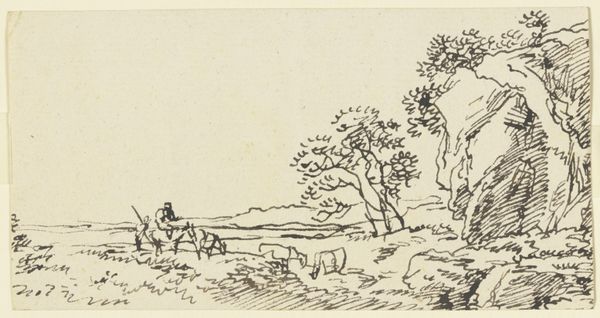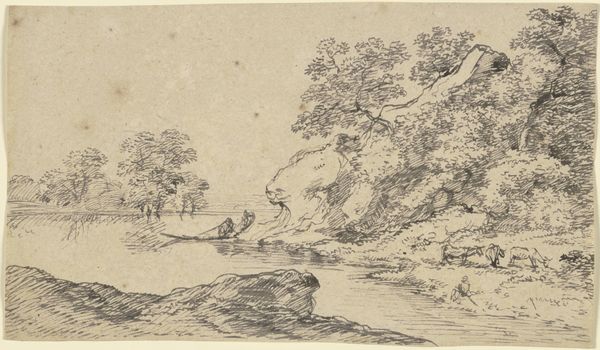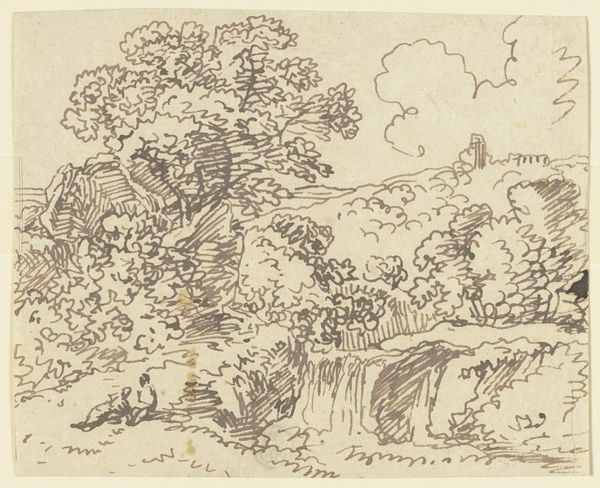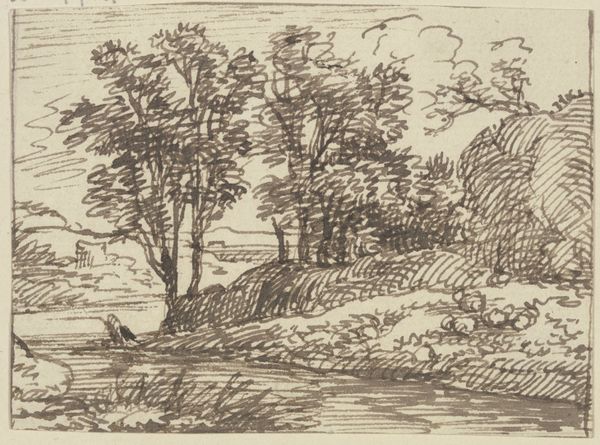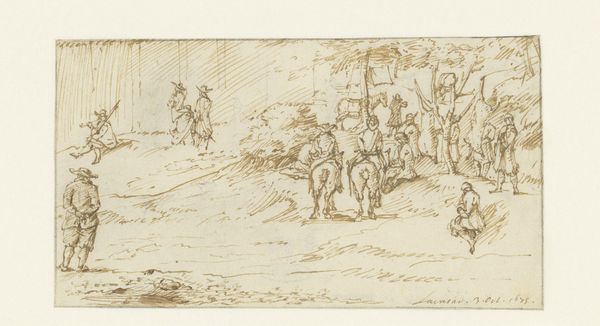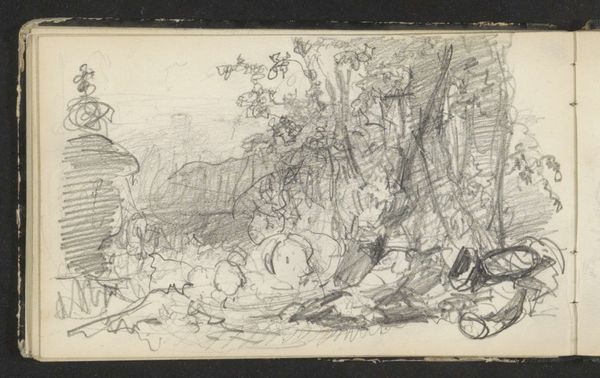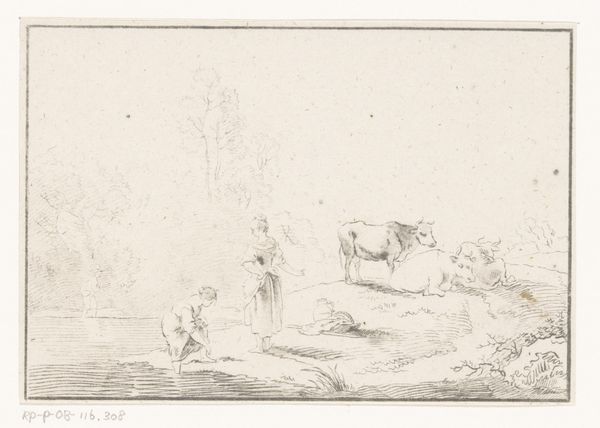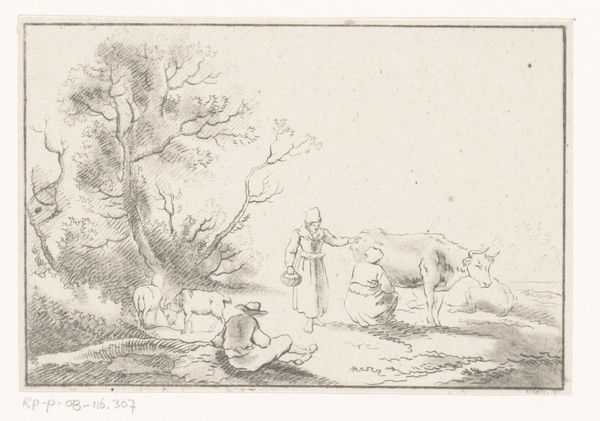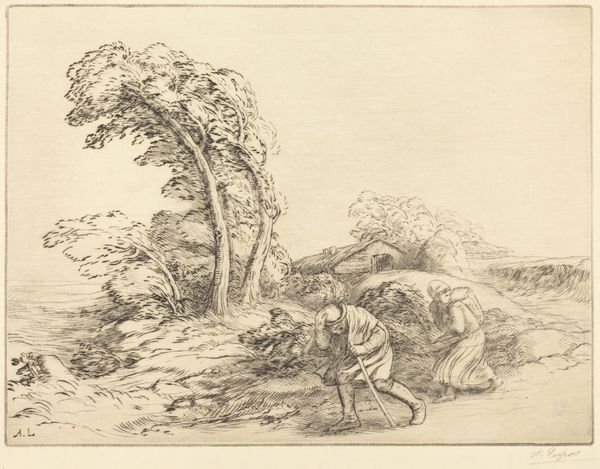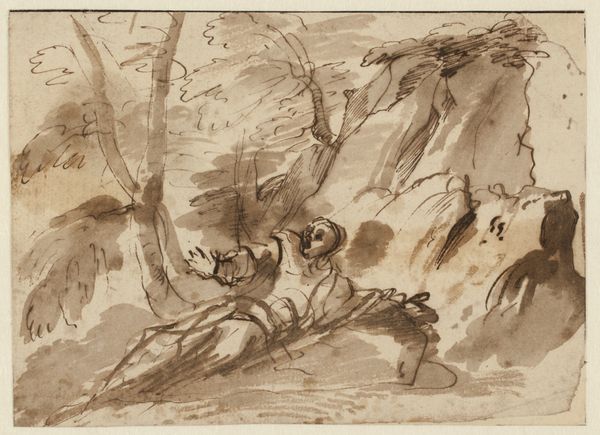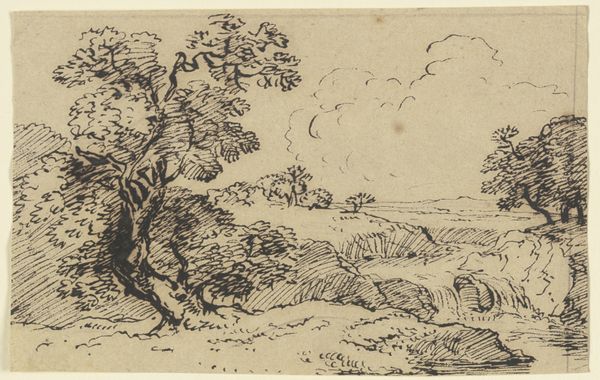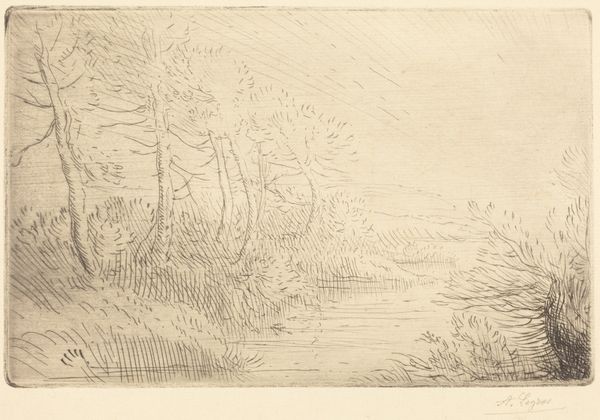
Gelders landschap met rustende jagers onder een boom 1840 - 1880
0:00
0:00
johannestavenraat
Rijksmuseum
Dimensions: height 105 mm, width 205 mm
Copyright: Rijks Museum: Open Domain
Curator: This is Johannes Tavenraat’s "Gelders landschap met rustende jagers onder een boom," or Gelderland landscape with resting hunters under a tree. It was likely made between 1840 and 1880, and he created it using ink in a drawing style. Editor: What strikes me first is the simplicity of the composition. A high horizon line, most of the pictorial space is dedicated to this arid foreground where, on the right, a group of figures shelters beneath a rather gothic-looking tree. Curator: It certainly evokes that Romantic era feel. You can almost smell the dry earth and imagine the roughspun cloth of their garments. I'm drawn to the labor implied, not just the depicted work of hunting, but also Tavenraat's act of physically making the artwork itself; what were the common inks and paper of his era? Who was consuming his art, and what social function did landscapes like this fulfill? Editor: An interesting avenue, but look how he balances the visual weight of that large tree with the smaller, more distant group of clustered forms on the left. The ink wash he’s applied adds dimension to an otherwise linear exercise, suggesting the heat shimmering on the plains, making this tableau incredibly serene and immediate. I like how those repeated lines build the volume and texture of both tree and foreground. Curator: Do you think he chose to depict hunters specifically, or would any laborers of the land fulfill his narrative purpose? Editor: Hunting connects them viscerally with the landscape. They are participating in, maybe even dominating nature. See how their bodies mirror the slope of the land? Curator: Perhaps the emphasis on depicting labor, regardless of its nature, elevates this to a different form of commentary. This isn't about the romanticization of an individual; it’s rooted in class. It reminds the consumer that everything has to be earned through toil. Editor: Interesting to connect that level of social awareness here. For me it reads like pure romantic appreciation. Even in such simple, sketched execution there's deep formal beauty, using a reduced tonal pallette to construct depth of field. Curator: For me, seeing it as a pure formal exercise seems to downplay Tavenraat's connection to the society in which he lived. We must remember that all art comes from somewhere, born out of collective efforts. Editor: True, and hopefully viewers seeing this today will engage with Tavenraat’s ink drawing on multiple levels, as we are now. Curator: It makes me think of other ink drawings produced at this time and in this locale, prompting deeper social investigation.
Comments
No comments
Be the first to comment and join the conversation on the ultimate creative platform.
